COVID-19 Has Created a Crisis of Hunger
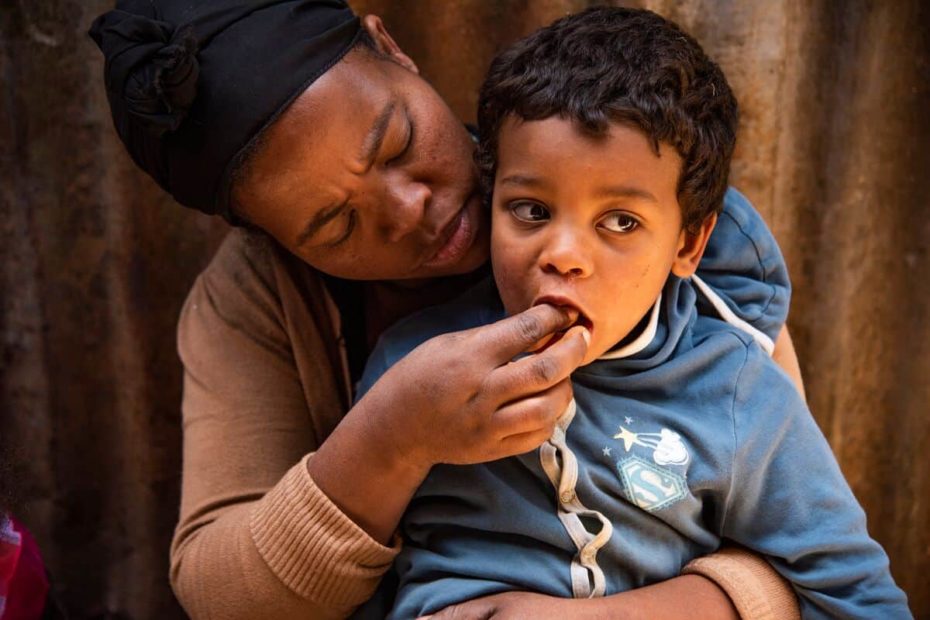
The worldwide problems caused by COVID-19 seem nearly impossible to count, but millions in poverty share one obstacle that may eclipse all others: hunger.
Continue Reading ›The Thoughtful Christmas Surprise That Relieved a Worried Mom
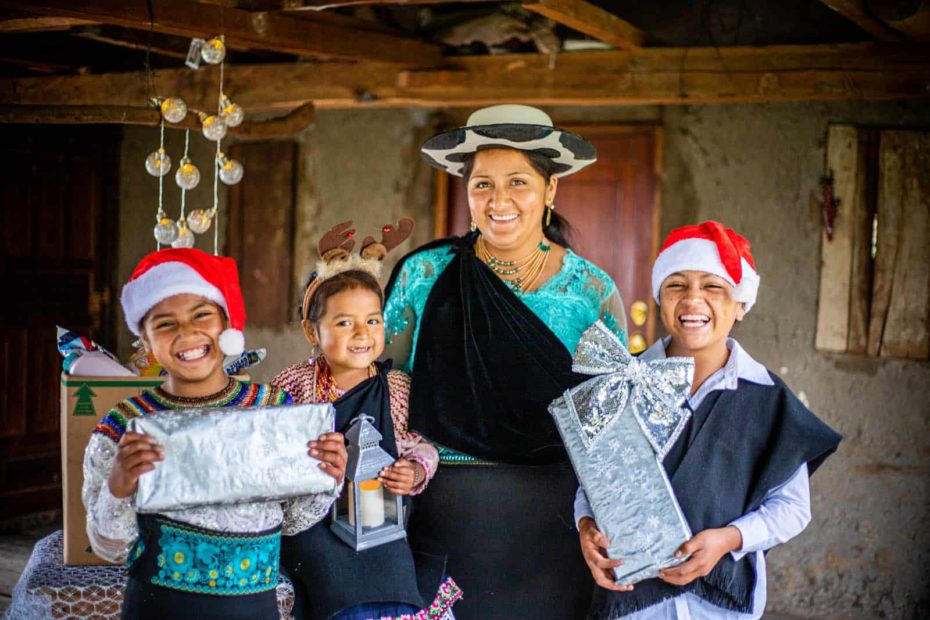
Jenny was worried. The mother of three had been working daily in the fields, trying to recover what little remained of her corn crops after they were pummeled by hail. But the damaged crops weren’t even her biggest concern — it was the approaching Christmas without her husband. As Jenny wondered what the holiday would be like without him — and whether her family would have enough to eat — staff at her children’s Compassion center were planning a beautiful Christmas surprise.
Continue Reading ›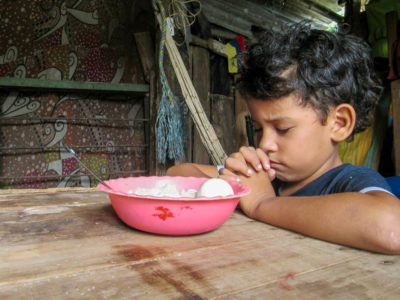
Put Food on the Table by Not Leaving Money on the Table
Compassion-assisted children and their families are fighting for their lives in the face of the global pandemic. Work is scarce, food is scarcer. The good news? Doing more might not require any additional giving on your part. Here’s how to find out if your employer has a matching gift program that could at least double the impact of your giving — and why it’s so crucial to maximize the miracles right now.
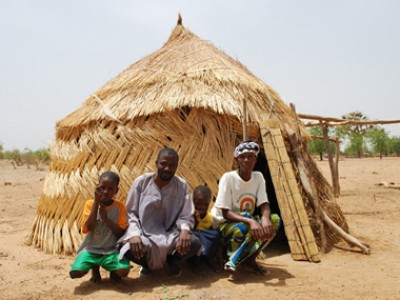
Facing a Food Crisis in Burkina Faso
Having something to eat is a gift from God, especially in communities where food production meets only basic needs. When climate hazards happen, solidarity is the only thing that keeps the people of Burkina Faso hoping for better things.

Food Security in Uganda
Families who participated in our 2009 food security programs have now built up adequate reserves to survive two or three years of poor harvest.
Risks Remain Large for Kenyan Children
While the East African nation of Kenya does not grab as many headlines as its less stable neighbors to the west, disease, malnourishment and violence are leaving a mark on this generation of Kenyan children.
 About 500,000 Kenyan children are missing school due to lack of food.
About 500,000 Kenyan children are missing school due to lack of food.
According to the World Food Program, in countries where school attendance is low, the promise of at least one nutritious meal each day boosts enrollment and promotes regular attendance. Where that is not offered, hunger interferes with the children’s concentration in class, affecting class performance. As famine takes its toll across the country, a growing number of students are staying away from school altogether to help their parents look for food (The Standard, Sept. 23, 2009).
Drought and famine have led to an increase in the high school dropout rate primarily in schools in the Njoro and Nakuru areas. While 29 percent of children in Nairobi are malnourished, that number increases to 42 percent in the Eastern Province (Daily Nation, Oct. 7, 2009).
The United Nations Scientific and Cultural Organization (UNESCO) has stated that malnutrition is the major barrier to universal primary education in Kenya.
Famine conditions have also affected livestock in the rural areas of Kenya, undermining the primary source of income for pastoralists, especially the Maasai population. (more…)
H is for Hunger
Here’s a sad bedtime story: One out of seven people in the world go to bed hungry every night, victims of extreme poverty.
You can help them have a happier ending – compassion.com/youcan
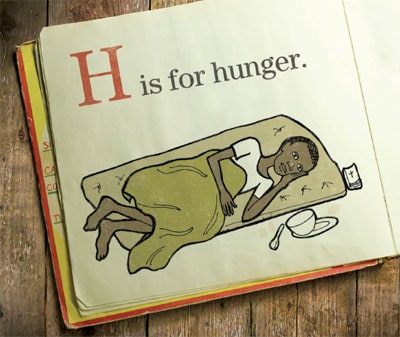
You Give Them Something to Eat
It seems we, as humans, are always passing the buck, or bucking the responsibility.
Jesus replied, “They do not need to go away. You give them something to eat.”
“We have here only five loaves of bread and two fish,” they answered. — Matthew 14:16-17, NIV
Jesus saw the multitude and that the multitude was hungry. His attitude was not to leave their well-being up to someone else. He took responsibility and He wanted His disciples to assume this responsibility as well.
His disciples, however, could not see past their own limitations.
“We don’t have enough food for all these people” and “we don’t have the money to buy food for all these people” were the excuses Jesus heard.
The disciples wanted to send the hungry people away to fend for themselves, passing the responsibility of feeding the hungry back onto the hungry themselves.
Jesus, however, was not deterred by the physical limitations of the situation. He had bread the disciples didn’t understand. He understood the limitless nature of God’s provision, a provision not encased in the physical reality around us, but in the supernatural reality of God.
Is our response not much the same as the disciples when we are confronted with the need of the hungry? (more…)
Seeds for the Harvest
The green leaves start to receive the first rays of the sun, leaving the darkness and cold of the night behind. It is 6 in the morning and the harvest looks ready – ready to be separated from the corn bush, ready to become part of a meal, and ready to be part of a change in the lives of an entire community.
This is the fruit of seeds planted with hope, watered with hard work and dreams, and, at last, harvested with joy.
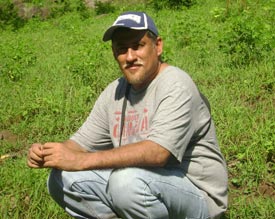 Pastor Damian checks two sacks full of beans. It is just the beginning of the harvest and the fruits already look promising.
Pastor Damian checks two sacks full of beans. It is just the beginning of the harvest and the fruits already look promising.
Another man, Brother Juan, a seasoned farmer with dark skin and gray hair, is a perfect example of a Salvadoran farmer – thin but somehow robust, quiet and wise. Juan has served as an adviser to Pastor Damian since they decided to implement program “Double Seed.”
Juan talks about the beans and how they should keep some leaves and dirt in the sack so the beans will not lose the humidity they need.
“This way, they can last for about a year,” he adds, and smiles, knowing that the efforts made these past three months have given results – promising results that translate into hope.
It has been three months since Double Seed started in the community of Corinto, in Zaragoza, a city located eight miles south of the capital city, San Salvador, in El Salvador.
These past months meant sweat and great efforts for the people, but it also meant hope for a future that did not seem so clear a few months before. (more…)
New Year Reflections for 2009
Happy New Year! We hope as you celebrate the beginning of 2009 you take time to reflect on the grand blessings and immense grace of the Lord . . . and prayerfully consider what the year ahead may have in store.
Here are a few of our highlights from 2008. In fact, they might be some of yours too; after 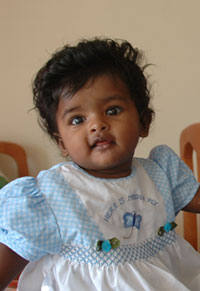 all we could not have reached any of them without you!
all we could not have reached any of them without you!
- We registered our one millionth child.
- We opened the first Compassion child development center in Togo.
- Compassion Tanzania registered its 50,000 child.
Of course, a year can be marked with trials as well. But through these trials the Lord is faithful to refine us as gold.
Many children and families already struggling to buy food have been, and are still, greatly affected by the Global Food Crisis. Although, with the guidance of God and your heart much has been accomplished:
- 79,016 children have been able to receive immediate food relief because of your Global Food Crisis (GFC) donations.
- In the Dominican Republic your GFC donations provided food certificates to 775 Child Survival Program participants. The main recipients being mothers and infants.
- In Honduras your donations created productive micro projects such as poultry and fish production farms, to fight the crisis long term.
- In Ethiopia, GFC donations helped provide therapeutic supplements, staple food grains and medication to nearly 11,000 families.
Thank you so much for your commitment to children in poverty this past year. They truly are blessed by your passion and faith.
In all things we can be confident that no matter where the Lord takes us, what situations He brings us into, or what blessings He has in store we will honor Him and be filled with His love.
“Commit to the Lord whatever you do, and your plans will succeed.” – Proverbs 16:3, NIV
Holes in the Pockets
Aleja wakes up very early in the morning, as she does every Saturday, to go to the market and buy the groceries for the week. She takes with her the same amount of money she usually does, but to her surprise she can’t even buy half of the things she needs.
At home, Aleja has five small children waiting for her to bring them something to eat. She is a single parent, mother of two sponsored children from Betel Student Center in the city of Oruro. She was abandoned by her husband and left with her children.
The family lives in a very small and dark room where they have three beds, a small table, some chairs and a small, wrecked shelf. Outside of the room, they use a small space covered with old pieces of calamines as their kitchen.
Aleja works washing clothes. She earns around $21 per week, and that is how she supports her family. She uses the money to pay the rent, the water, the electricity, the gas and buy the food and some things her children need for school. (more…)
Nine Questions With Cesiah Magaña
You asked your questions of Cesiah, field communication specialist in Mexico, and she answered. Take it away, Cesiah.
1. First of all, thank you so much for all you do for the precious children of Mexico! My question is, as you go through each day seeing a multitude of needs in these children’s lives, what do you find yourself praying for most often? (Lindy)
Most of the time, I pray for their hearts. My main prayer is normally that they get to experience the love of Christ. I long for them to know how precious they are to God. I pray that they never give in to the idea of not being worthy or good enough to do anything they dream of.
2. How far do the students travel, on average, to get to the centers and how do they do so? (Walk, bus, etc.) (Beth Ingersoll)
Most of the children registered live very near the churches where they participate in the activities and where they are registered. It is very common for them to walk. As part of the program, Compassion Mexico considers children within 30 minutes walking distance.
In some of the child development centers, it is common to see a few children ride their bicycles to the center, but in those cases it is only a luxury some can afford.
There are other churches where the pastor’s vehicle or the cars owned by the church membership serve to bring children to classes. Every time they drive by the community, children line up to jump in and ride to the church. Many times these are old cars on bumpy and dirt roads, but the fact of being able to ride with the teachers or sparing the hot sun is well worth the tightness.
Finally, there are centers where teachers and staff members split by areas, and they walk the streets around the center to bring children in. Families then trust their children to go with the staff members to church.
Either if children walk by themselves or in big groups or ride their bikes to the projects, they normally wear a special shirt from the project or even uniforms, so it is very nice to watch children come into the centers because they fill the streets with joyful laughter.


